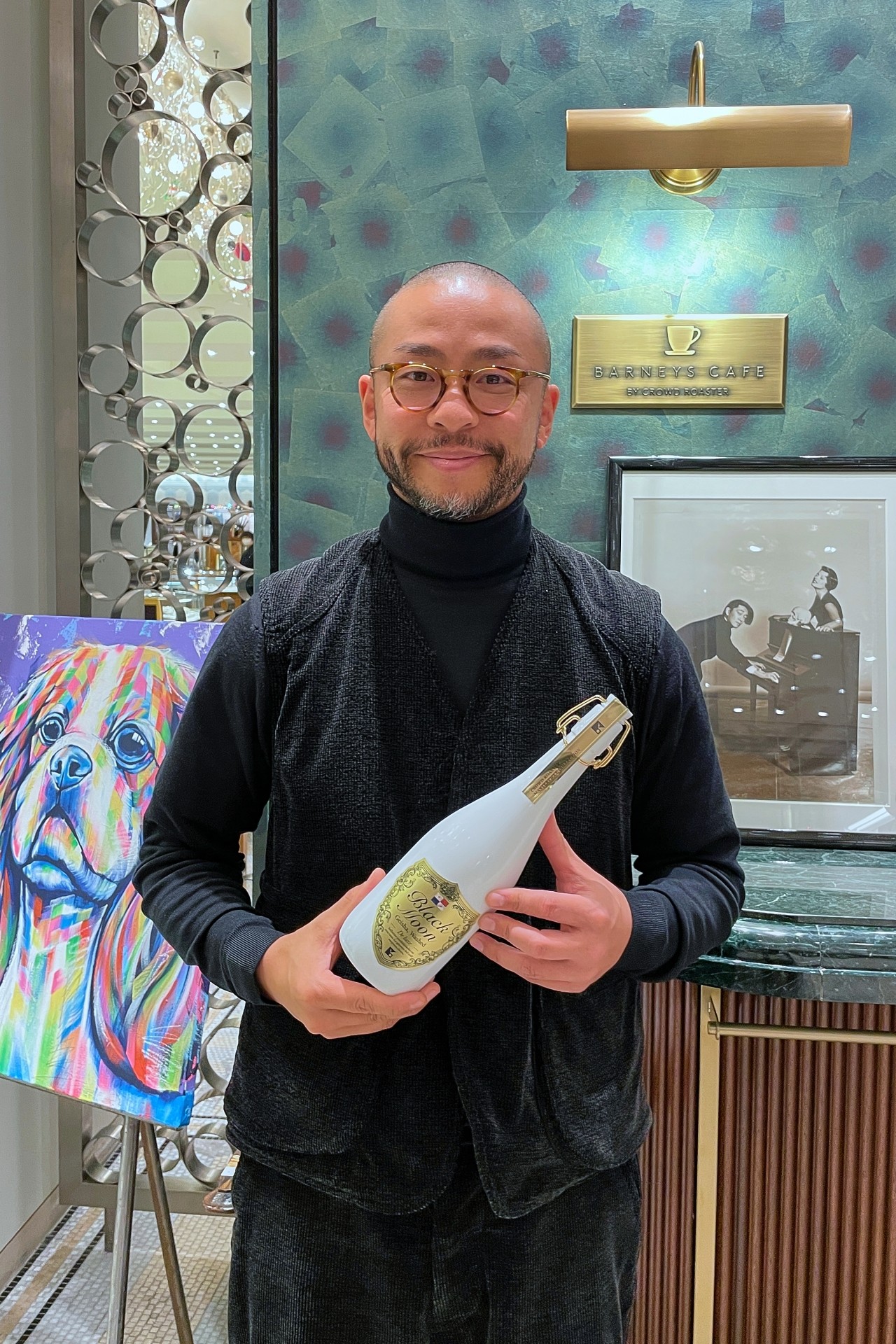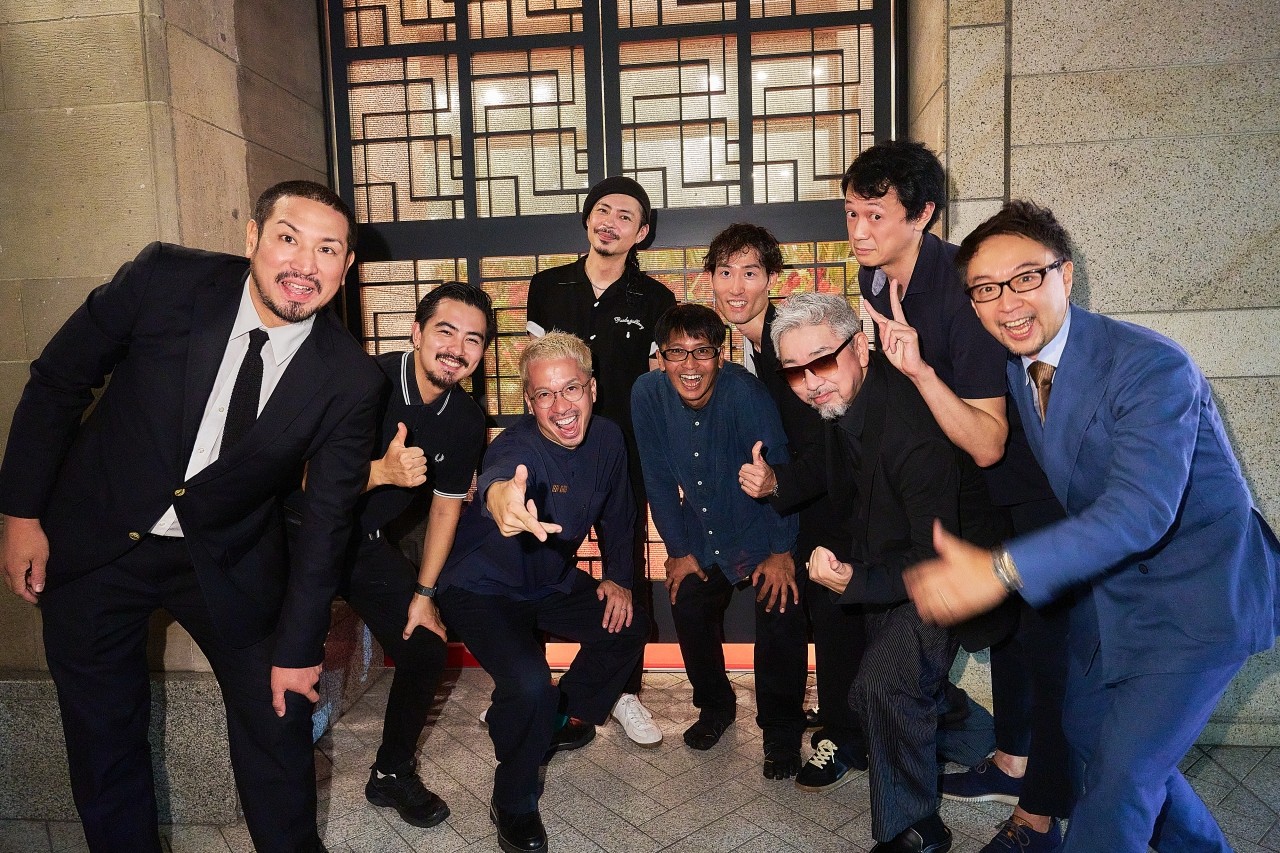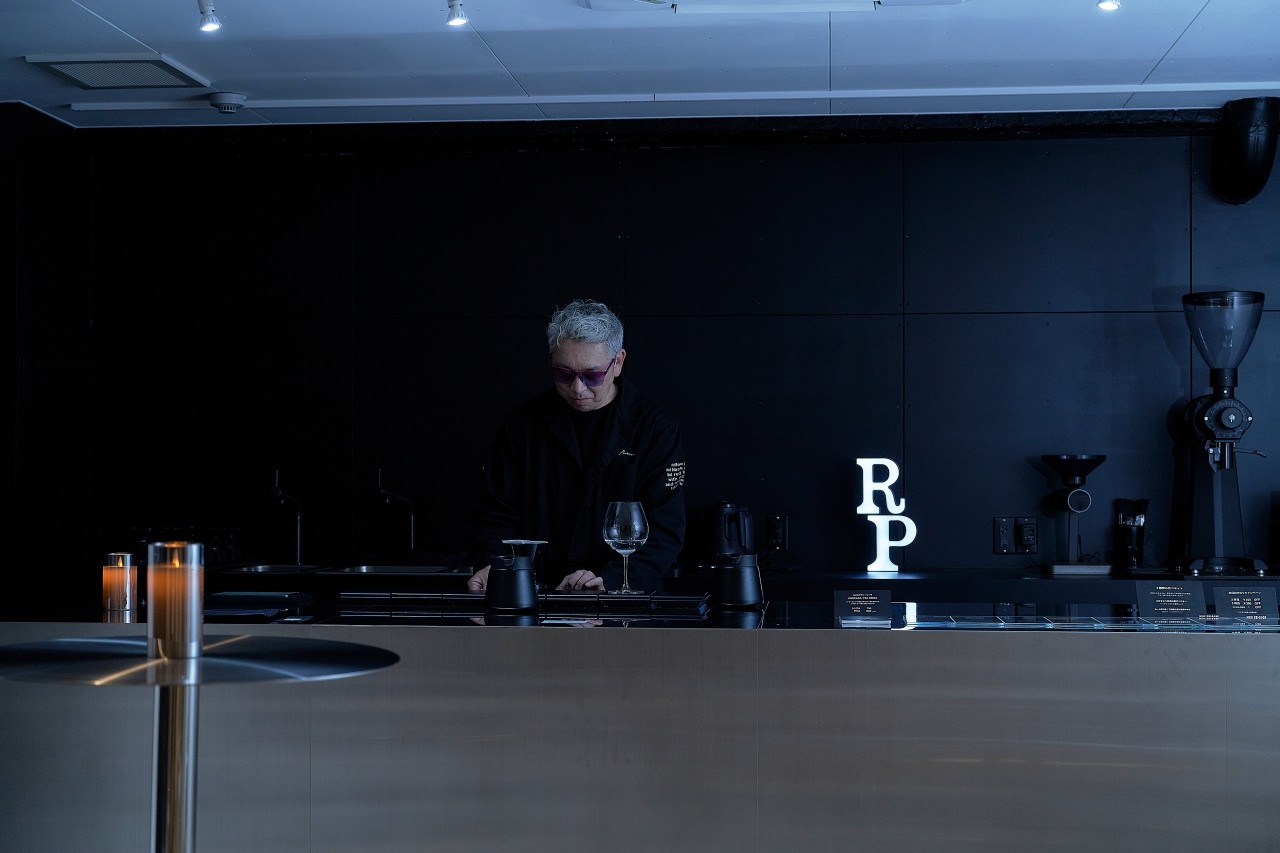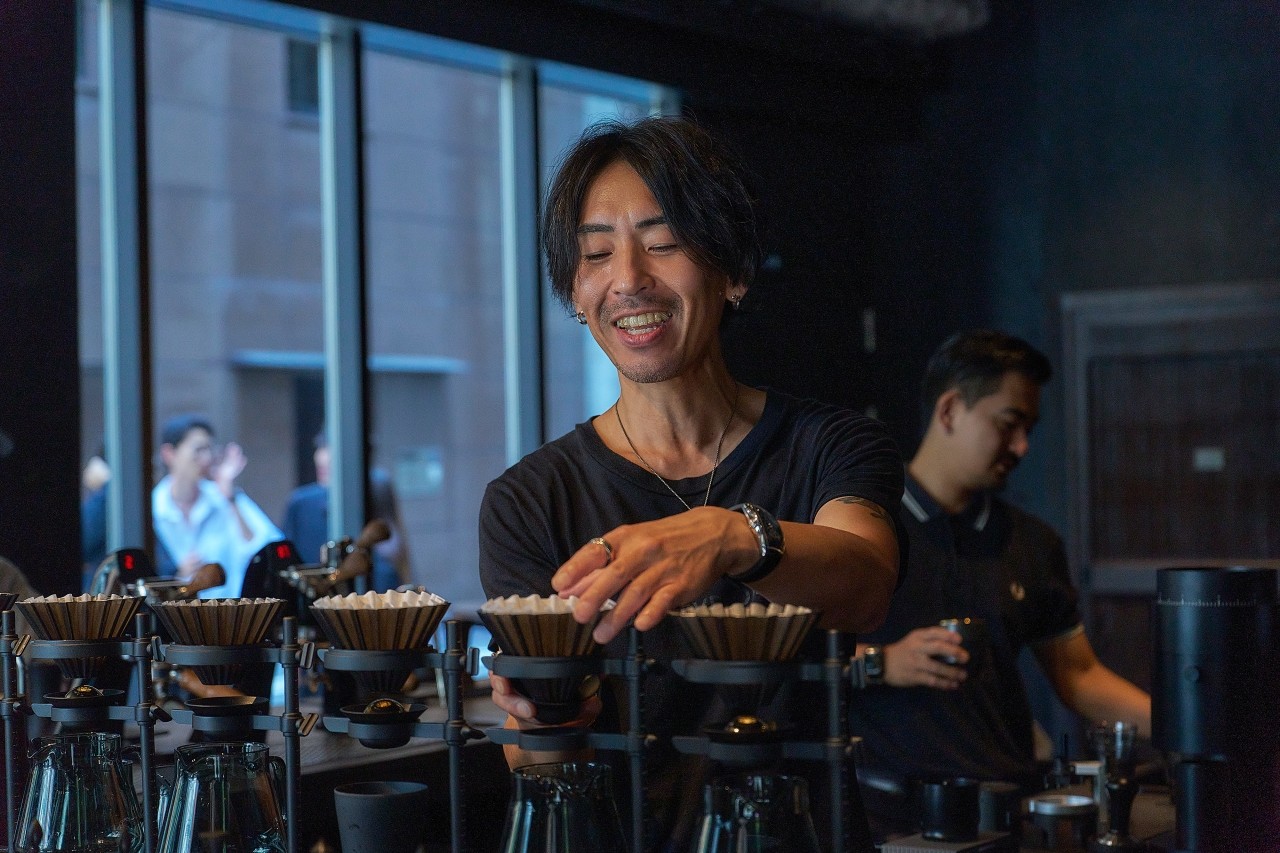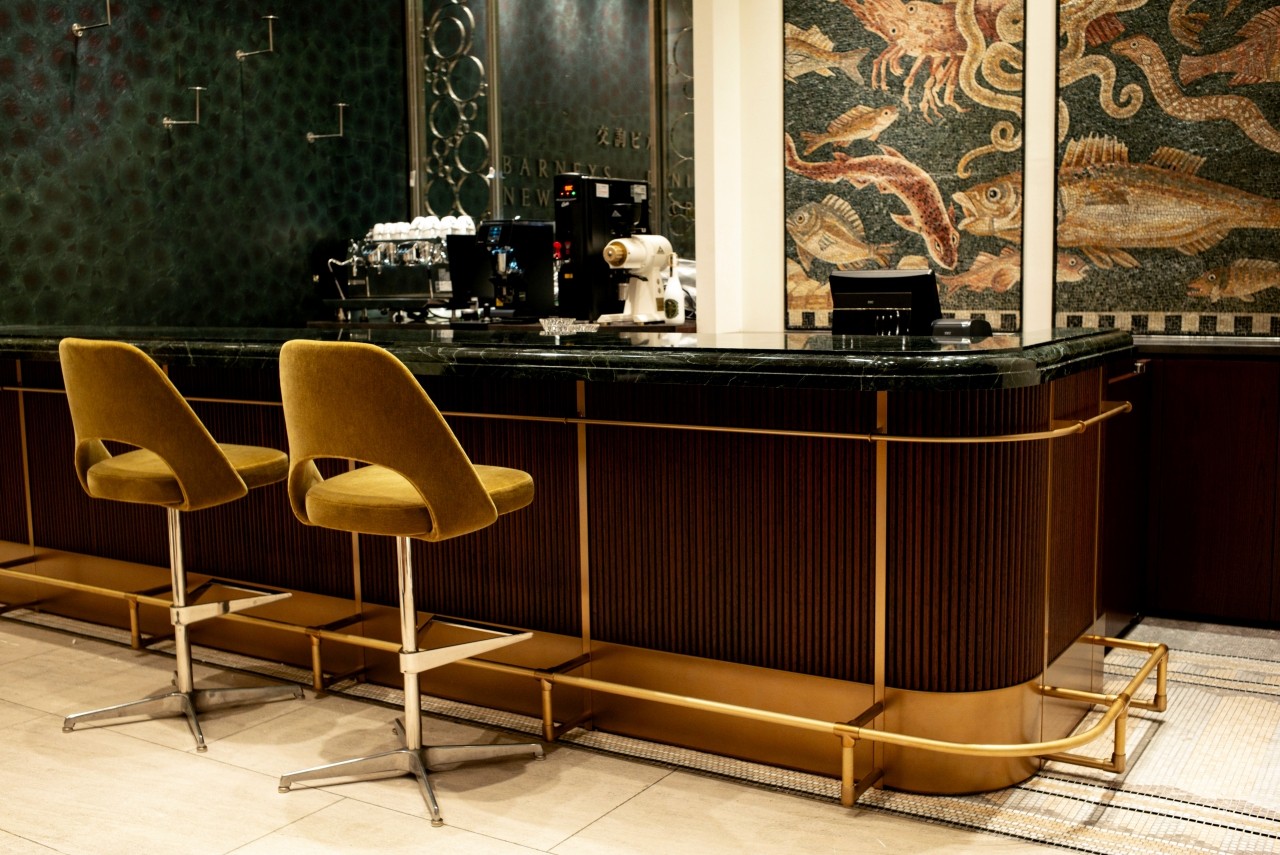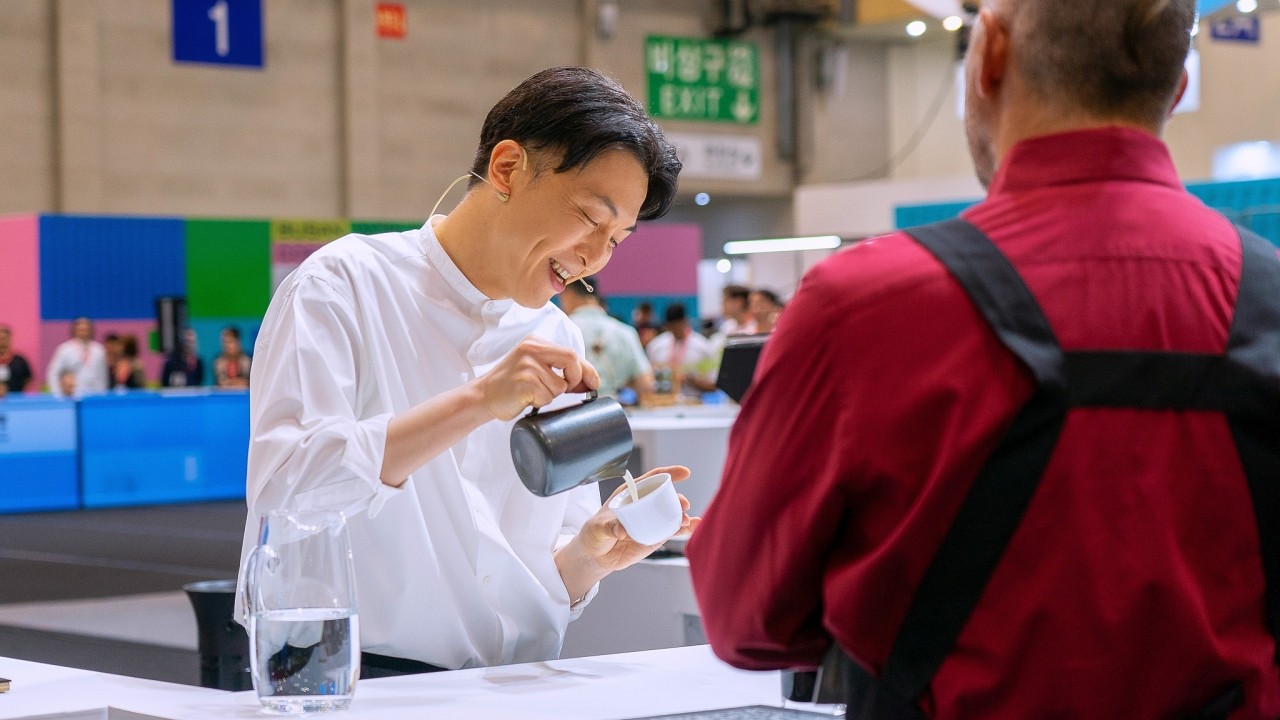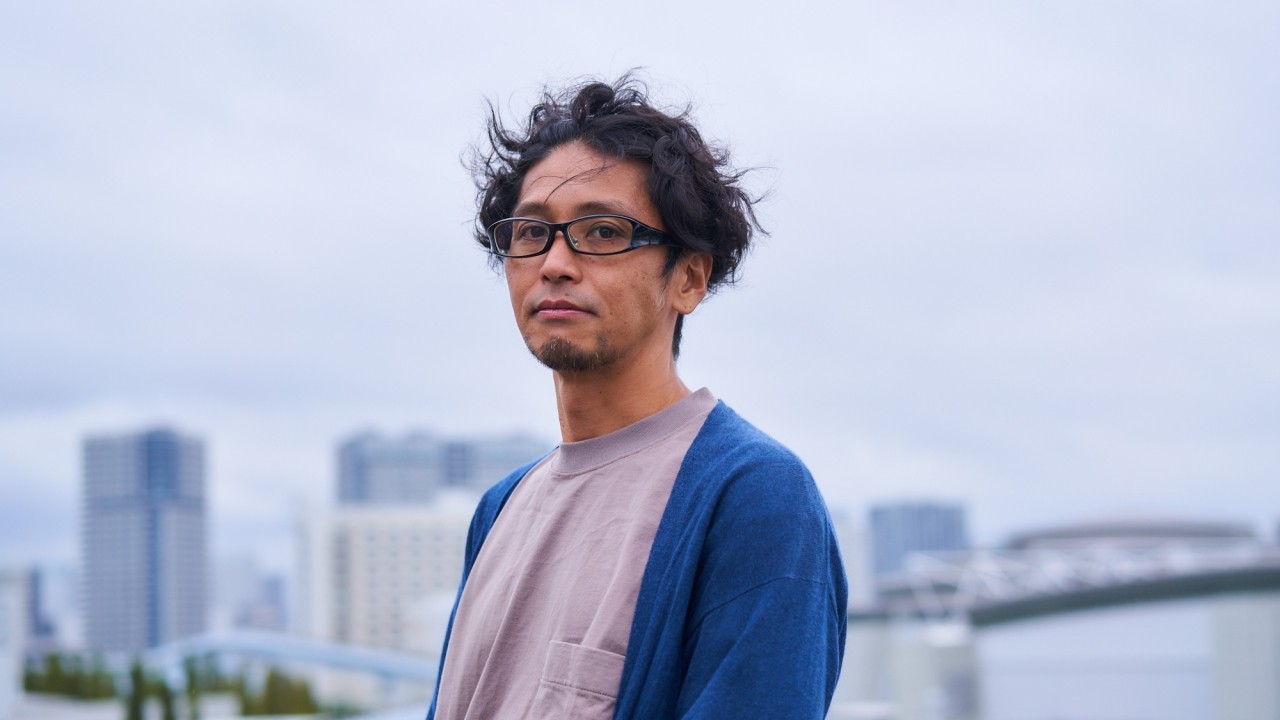Relationship between country of origin and production processing Sequel [Coffee Fanatic Hitomi 's Deep Coffee World Part 3]
Hello! I'm Coffee Fanatic Hitomi !

In the previous article, we explained the coffee producing country classifications of Colombia Mild and Other Mild, but we would like to continue by talking about Brazilian Natural and Robusta!
Coffee Producing Countries' Agreement
Brazilian Natural Arabicas
Brazil, Ethiopia, Paraguay
Colombia Mild Arabicas
Colombia, Kenya, Tanzania
Other Mild Arabic
Bolivia, Burundi, Costa Rica, Cuba, Dominica, Ecuador, El Salvador, Guatemala, Haiti, Honduras, India, Jamaica, Malawi, Mexico, Nicaragua, Panama, Papua New Guinea, Peru, Rwanda, Venezuela, Zambia, Zimbabwe
Robusta
Angola, Democratic Republic of the Congo, Ghana, Guinea, Indonesia, Liberia, Nigeria, OAMCAF (Benin, Cameroon, Central African Republic, Congo, Côte d'Ivoire, Equatorial Guinea, Gabon, Madagascar, Togo), Philippines, Sierra Leone, Sri Lanka, Thailand, Trinidad and Tobago, Uganda, Vietnam
Brazil, Ethiopia, Paraguay
Colombia Mild Arabicas
Colombia, Kenya, Tanzania
Other Mild Arabic
Bolivia, Burundi, Costa Rica, Cuba, Dominica, Ecuador, El Salvador, Guatemala, Haiti, Honduras, India, Jamaica, Malawi, Mexico, Nicaragua, Panama, Papua New Guinea, Peru, Rwanda, Venezuela, Zambia, Zimbabwe
Robusta
Angola, Democratic Republic of the Congo, Ghana, Guinea, Indonesia, Liberia, Nigeria, OAMCAF (Benin, Cameroon, Central African Republic, Congo, Côte d'Ivoire, Equatorial Guinea, Gabon, Madagascar, Togo), Philippines, Sierra Leone, Sri Lanka, Thailand, Trinidad and Tobago, Uganda, Vietnam
Looking at it this way, there are only a few countries that produce Natural wines, but there are a lot of countries that produce Robusta wines! Let's get started!
Brazilian Natural Arabicas

The reason why Ethiopia is not the group name even though it is the birthplace of Arabica coffee is because Brazil is the largest producer of natural coffee and this country sets the standard for natural coffee.
Countries that mainly produce natural coffee need to have a large area available for drying, or have clear rainy and dry seasons, with little rain during drying. Brazil meets both of these conditions. I've never heard of Paraguay coffee, but the current production volume is so small that it can be ignored as a market, so there's not much point in listing it.
Countries that mainly produce natural coffee need to have a large area available for drying, or have clear rainy and dry seasons, with little rain during drying. Brazil meets both of these conditions. I've never heard of Paraguay coffee, but the current production volume is so small that it can be ignored as a market, so there's not much point in listing it.
Ethiopia does not have the image of having a large drying area, but one of its characteristics is that cherries in this country ripen evenly, so there is no need to harvest multiple times. Therefore, it is a producing country that has the advantage of being able to harvest cherries over a long period of time.
Well, in the case of Ethiopia, it is also the birthplace of Arabica coffee, so you could say that the most primitive natural production process is deeply rooted there.
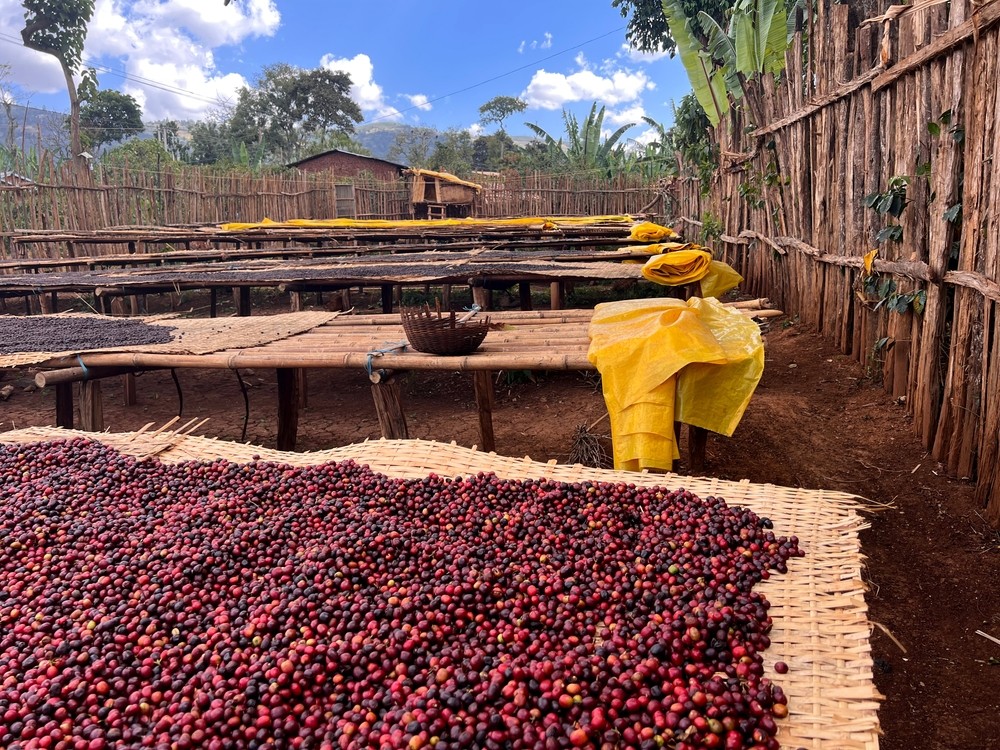
In countries that use washed coffee such as Colombia Mild and Other Mild, Natural coffee is treated as a low grade for domestic consumption and is considered "coffee that cannot be exported." In the first place, Natural preparation (process) does not exist as an export standard, so it could not be exported. So, this is the background to why I said in the previous article that there are superiority and inferiority in the production process itself.
When the Ethiopian pesticide issue came up in Japan in 2008, a producer in Nicaragua, Central America, produced natural coffee for Japan, but since it couldn't be exported as it was (it was considered a coffee with fermentation defects), they negotiated with a national agency and somehow managed to export it. At that time, the producer was able to obtain export permission by explaining that the flavor of this coffee was not a defect, but was created at the customer's request, and that they had a sales contract.
If we dig a little deeper into Ethiopia, I'm sure you all know that of course there are flush-type coffee machines in this country, but those who are well-informed will also understand that there is a hierarchy of grades, from G1, G2, G3, G4, G5, etc.
・・・・・Incidentally, these grades, G1 and G2, were actually only suitable for "washed coffee" and the highest grade for Natural was "G3". So the hierarchy was such that washed coffee was at the top. At first, exporters who were not bound by the government used names such as G1 for Natural coffee and sold it, but this was not actually "official" and they were just calling it by themselves (/・ω・)/.
This is a very complicated story, but the contract classification in Ethiopia is Q1, Q2, which is essentially the same as G1, G2, but the export grade standard name was different from the domestic classification, so this situation is thought to have occurred. A government-affiliated exporter was not allowed to call Natural G1, so they had to sell it as "G3" while keeping an eye on other exporters.
Well, in the case of Ethiopia, it is also the birthplace of Arabica coffee, so you could say that the most primitive natural production process is deeply rooted there.

In countries that use washed coffee such as Colombia Mild and Other Mild, Natural coffee is treated as a low grade for domestic consumption and is considered "coffee that cannot be exported." In the first place, Natural preparation (process) does not exist as an export standard, so it could not be exported. So, this is the background to why I said in the previous article that there are superiority and inferiority in the production process itself.
When the Ethiopian pesticide issue came up in Japan in 2008, a producer in Nicaragua, Central America, produced natural coffee for Japan, but since it couldn't be exported as it was (it was considered a coffee with fermentation defects), they negotiated with a national agency and somehow managed to export it. At that time, the producer was able to obtain export permission by explaining that the flavor of this coffee was not a defect, but was created at the customer's request, and that they had a sales contract.
If we dig a little deeper into Ethiopia, I'm sure you all know that of course there are flush-type coffee machines in this country, but those who are well-informed will also understand that there is a hierarchy of grades, from G1, G2, G3, G4, G5, etc.
・・・・・Incidentally, these grades, G1 and G2, were actually only suitable for "washed coffee" and the highest grade for Natural was "G3". So the hierarchy was such that washed coffee was at the top. At first, exporters who were not bound by the government used names such as G1 for Natural coffee and sold it, but this was not actually "official" and they were just calling it by themselves (/・ω・)/.
This is a very complicated story, but the contract classification in Ethiopia is Q1, Q2, which is essentially the same as G1, G2, but the export grade standard name was different from the domestic classification, so this situation is thought to have occurred. A government-affiliated exporter was not allowed to call Natural G1, so they had to sell it as "G3" while keeping an eye on other exporters.
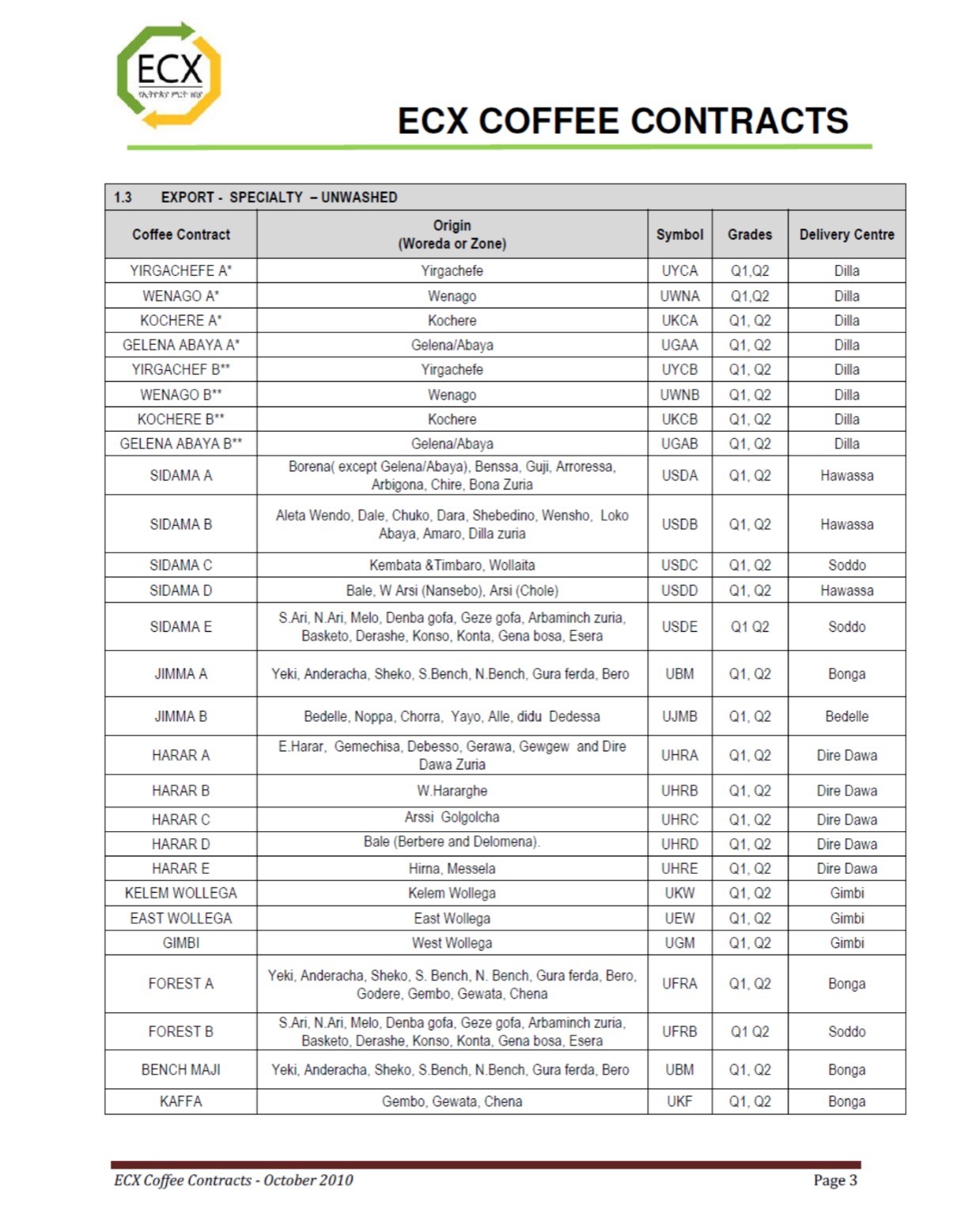 Ethiopian domestic specialty standard (Natural section). Grades are listed as Q1 and Q2.
Ethiopian domestic specialty standard (Natural section). Grades are listed as Q1 and Q2.....Currently, with the loosening of regulations at ECX ( Ethiopia Commodity Exchange) and the further rise of specialty coffee, it has become common for natural coffee to be labeled as G1 or G2.
Robusta
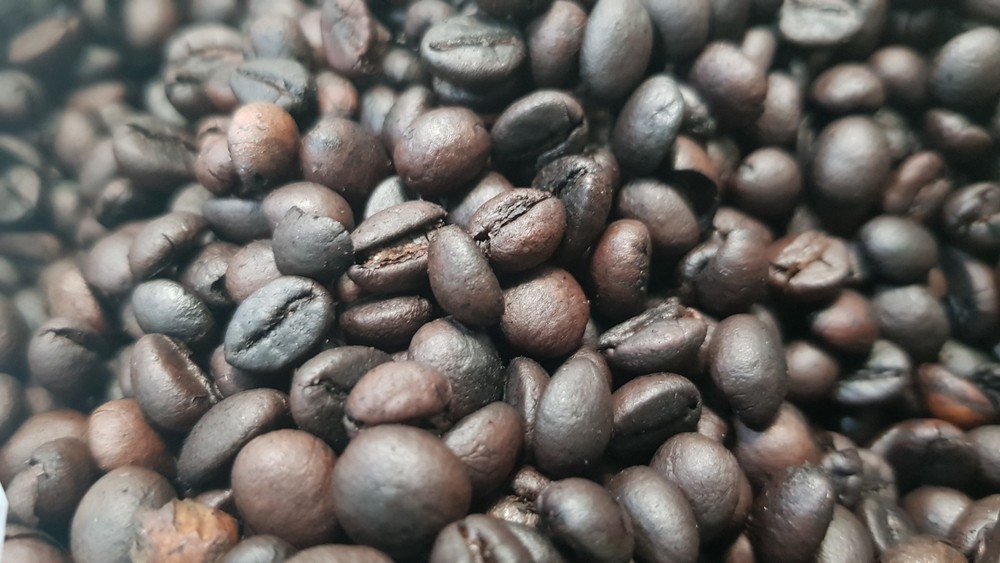
The Robusta group is a lower group than Natural. Robusta is the parent of Arabica, but it was only recently, in 1897, that it was recognized as a "species" in the market. This coffee species was introduced to Indonesia in 1900, where it suffered devastating damage from rust disease. The Robusta futures market opened in London in 1958.
Robusta producing countries include Brazil, Vietnam, Indonesia, etc., but the origin of Robusta is said to be on the west side of Lake Victoria in Tanzania. Therefore, Tanzania's Bukoba Robu is famous. As expected, most of the Robusta group is made up of African countries.
Vietnam is a country that has been steadily increasing its production since the 2000s, so my senior colleagues at my previous Koike and veteran coffee men who are in the industry were surprised and didn't expect it to become such a major player. Now, they produce about 30 million bags of Robusta, making them the number one producer of Robusta.
Indonesia is well known for its specialty coffee, but in fact Arabica accounts for only about 10% of the country's production, with the remaining 90% being Robusta. This makes Indonesia a proud producer of Robusta.
There are Robustas that use a water-washing method, which is considered to be of higher quality. Indonesia's WIB1 (West Indies Preparation) is a typical Robusta that uses a water-washing method in Japan.
Recently, in anticipation of the 2050 problem (a significant reduction in coffee supply due to global warming), attention has been focused on this variety, with the development of high-quality Robusta coffee and the establishment of appraiser qualifications, so it is possible that the production of Robusta coffee and its position as a variety in these countries will change!
.....
That was the story of Brazilian Natural and Robusta. Next time, I'd like to take a closer look at the production process of each product!
Well, good day everyone!
Vietnam is a country that has been steadily increasing its production since the 2000s, so my senior colleagues at my previous Koike and veteran coffee men who are in the industry were surprised and didn't expect it to become such a major player. Now, they produce about 30 million bags of Robusta, making them the number one producer of Robusta.
Indonesia is well known for its specialty coffee, but in fact Arabica accounts for only about 10% of the country's production, with the remaining 90% being Robusta. This makes Indonesia a proud producer of Robusta.
There are Robustas that use a water-washing method, which is considered to be of higher quality. Indonesia's WIB1 (West Indies Preparation) is a typical Robusta that uses a water-washing method in Japan.
Recently, in anticipation of the 2050 problem (a significant reduction in coffee supply due to global warming), attention has been focused on this variety, with the development of high-quality Robusta coffee and the establishment of appraiser qualifications, so it is possible that the production of Robusta coffee and its position as a variety in these countries will change!
.....
That was the story of Brazilian Natural and Robusta. Next time, I'd like to take a closer look at the production process of each product!
Well, good day everyone!
2023.6.3
Fanatic Hitomi
Fanatic Hitomi
(Reference) Is everyone misunderstanding this? The modern history of Starbucks and the roasting level at the time (Part 1)
https://coffeefanatics.jp/specialycoffee-peets-starbucks1/
https://coffeefanatics.jp/specialycoffee-peets-starbucks1/
If you want to enjoy coffee more deeply
" CROWD ROASTER APP"
Manabu at CROWD ROASTER LOUNGE
・Push notifications for article updates・Full of original articles exclusive to CROWD ROASTER
・Direct links to detailed information about green beans and roasters
App-only features
- Choose green beans and roasters to create and participate in roasting events・CROWD ROASTER SHOP: Everything from beans to equipment is readily available
・GPS-linked coffee map function

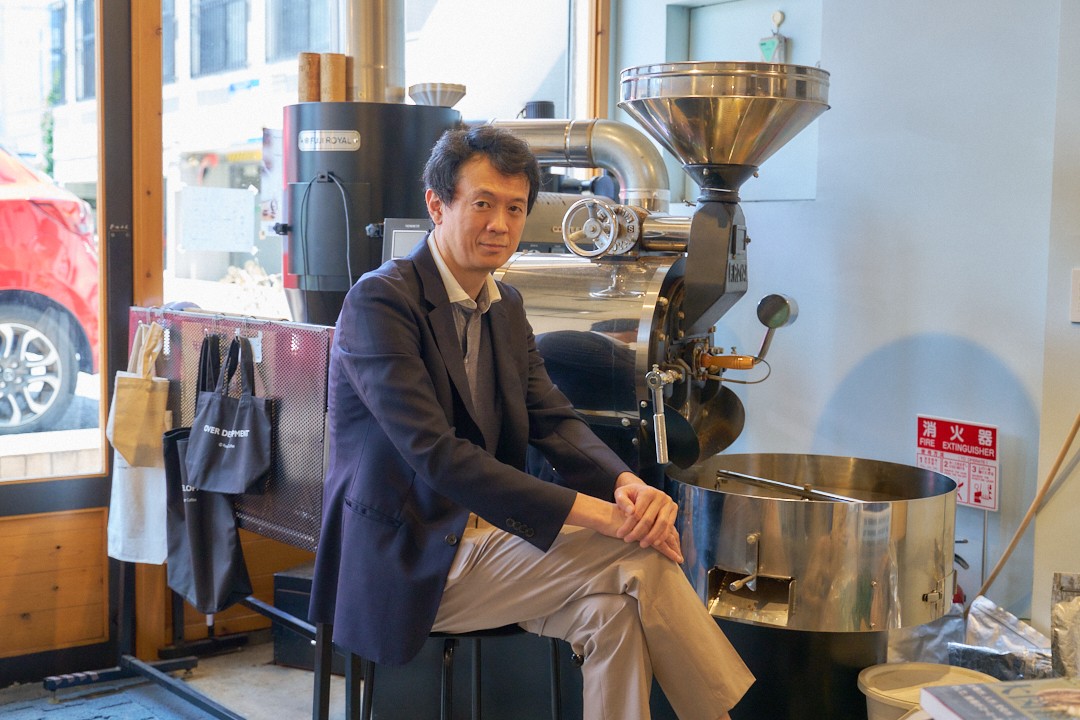
Ryo Mikami
After graduating from Manabu , he worked at Starbucks for some reason, which led him to discover the potential of coffee. After many twists and turns, he joined a specialty coffee trading company. He was enlightened to the way of the fanatic, and is now involved in a wide range of work from commodities to specialties, including market analysis, visiting coffee producing areas, judging competitions, coaching competitions, extraction, roasting, and equipment proposals. He is also an advisor for CROWD ROASTER .
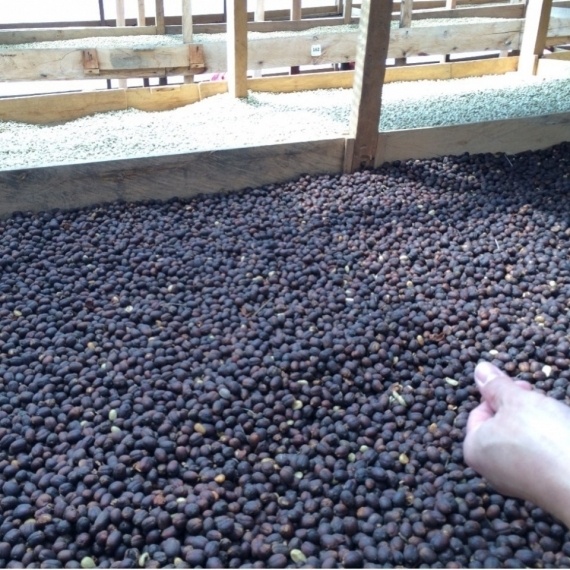
Natural super basics [Coffee Fanatic Hitomi 's Deep Coffee World No. 9]

Free washed fermentation process [Coffee Fanatic Hitomi 's Deep Coffee World Part 6]
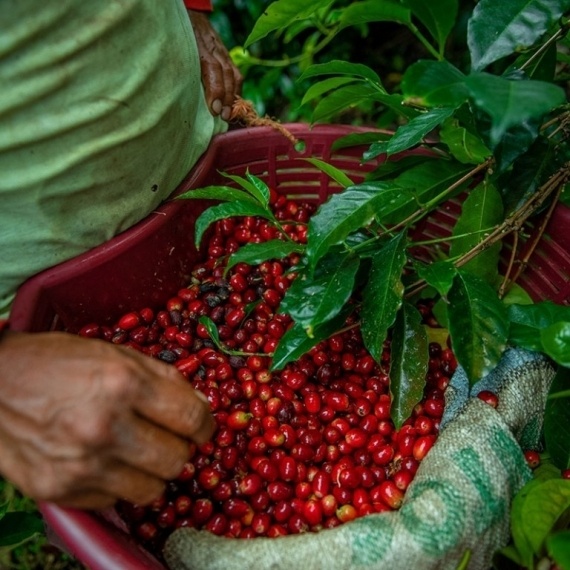
Basic flow of flushing method [Coffee Fanatic Hitomi 's Deep Coffee World Part 4]

What is production processing? [Coffee Fanatic Hitomi 's Deep Coffee World Part 1]

What is infused coffee? [Coffee Fanatic Hitomi 's Deep Coffee World No. 18]

What is the Costa Rican Anaerobic Honey Process? [Coffee Fanatic Hitomi 's Deep Coffee World No. 17]
